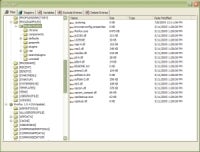When it comes to managing your growing business’ IT needs, hardware rollouts are the easy part. You set up the PC and plug it in, and it either works or it doesn’t. The hard part is getting all the software loaded and working properly, with different configurations for each employee depending on their job function.
If all you use is Microsoft Office, you’re still in good shape. But start adding CRM apps, accounting programs, HR tools and custom software, and the situation deteriorates in a hurry. Your IT guy will need to test each app to see if coexists nicely with the others; any software upgrades down the road will need to be similarly vetted.
DLL Dilemma
An all-too-common scenario, especially for businesses running custom-built or legacy applications, is the Windows Registry and DLL (Dynamic Link Library) conflicts that can arise, where different applications require different versions of the same DLL system file. This “DLL hell” is, at best, difficult to work around and, at worst, impossible to resolve. So it’s no surprise that deploying software is where the IT hours — and costs — start to mount.
That was the scenario facing Jim Grusendorf, computer systems manager for Hudson & Company LLP, an accounting and insolvency trustee firm based in Calgary, Alberta. In the office, the 50 or so employees work at client-server terminals.
“We use Citrix internally, so that’s easy to manage,” Grusendorf says. But he also has to support the company’s 25 notebook-equipped accountants in the field. “Laptops are always an administration headache,” he says.
Virtual Software Management Offers Real Solution
So he turned to Altiris Software Virtualization Solution 2.0 (SVS for short). With SVS, applications are deployed in “layers,” with each application getting its own protected environment. That means you can have different versions of a given DLL for different apps, or even older and new versions of an application loaded on a machine, with no conflicts.
Even better for Grusendorf, SVS lets him activate or deactivate client apps remotely, so the laptop doesn’t need to be returned to headquarters. “I had been installing all software manually. But SVS lets me do everything I need to, remotely,” he reports. “I can delete old software layers or add new ones. It works great.”
Unlike other solutions, SVS doesn’t partition the hard drive to work its magic. Nor does it set up virtual machines (as VMWare does), which can be daunting for mere mortals and slow a system to a crawl.
 The Advanced Layer Properties Editor in SVS lets managers customize and optimize a VSP prior to delivery. (Click for larger image). |
Instead, SVS uses a patented capture process that “virtualizes” the application into a Virtual Software Packages (VSP). The VSP is then copied to the target machine, where it remains dormant (and invisible to the end user) until activated.
This virtualization process ensures that applications use the correct files and registry settings, without modifying the operating system and without interfering with other applications.
Once a VSP is activated, the application, along with its associated files, becomes visible and usable. This lets IT create one disk image for an entire company, and simply activate applications on a case-by-case basis, rather than building and maintaining a host of images (one with a set of apps for marketing, another with a different set for accounting, and so on).
This can also save on software licensing fees (depending on an app’s fee structure), since instances of a program can be turned on and off as needed — letting you pay for fewer concurrent licenses. (Of course, if you pay per install, rather then per active user, then SVS won’t save money on licensing.)
SVS works under Windows 2000 and XP. You can use Altiris’ overarching management suite, called Extensible Management Architecture, or any major desktop management product to run the system. SVS even supports a command-line interface for people who like their coffee black and their management basic.
That said, managing SVS is likely beyond the reach of most non-techy business owners. If you don’t have an in-house IT person (or an outside firm you contract with to handle your network and so on), Altiris can point you to a consultant or VAR who can set you up.
Customers can download a single-user license of SVS free of charge. After that, it’s $29 per seat, which is what really sold Hudson & Company’s Grusendorf. “I don’t have a big budget, and the SVS pricing is very attractive,” he notes.
Figure in less testing and provisioning time for IT staff, and less downtime for employees, and Altiris SVS should certainly pay for itself in short order.
Jamie Bsales is an award-winning technology writer and editor with nearly 14 years of experience covering the latest hardware, software and Internet products and services.
| Do you have a comment or question about this article or other small business topics in general? Speak out in the SmallBusinessComputing.com Forums. Join the discussion today! |

